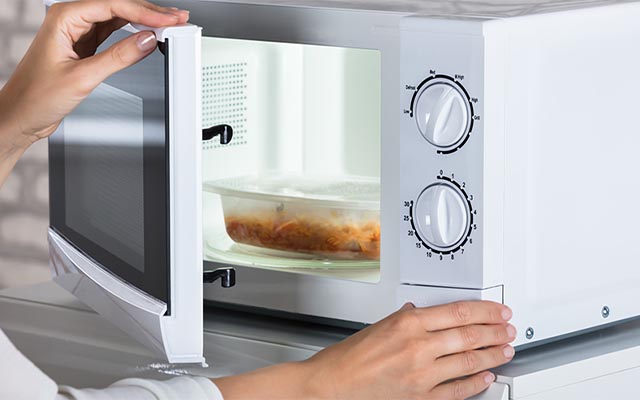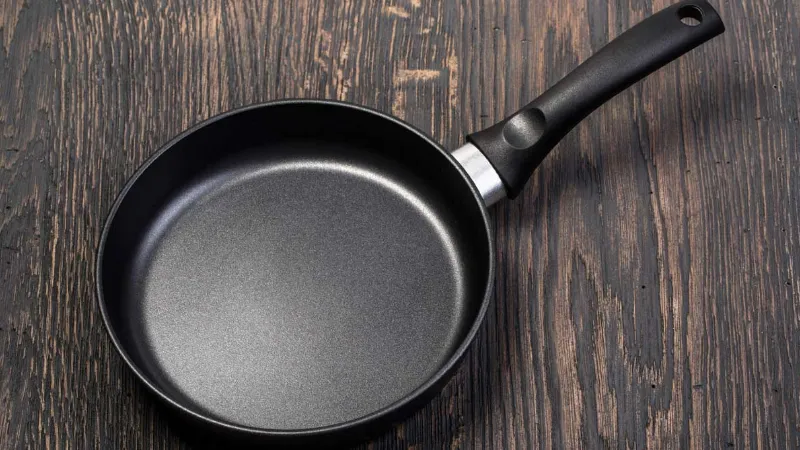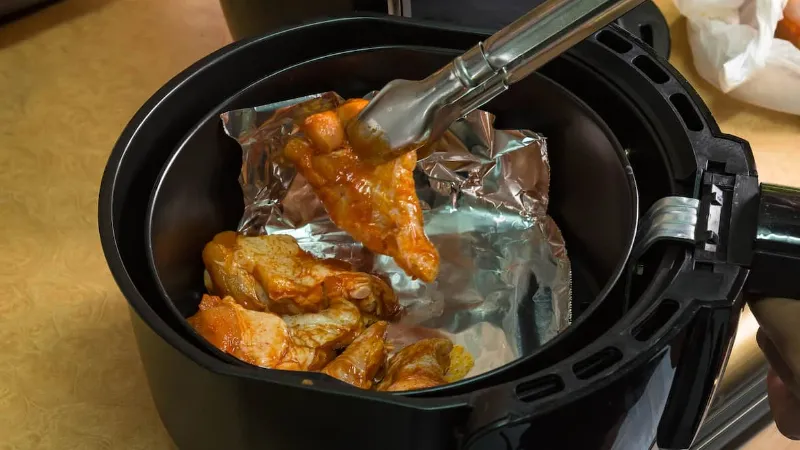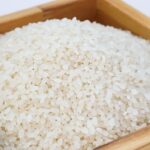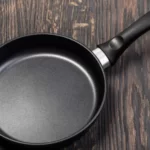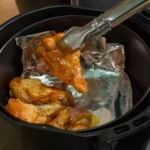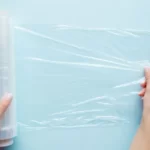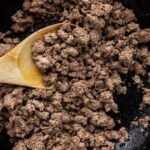Can You Microwave Tupperware? Is It Safe?
Although it may seem very convenient and alluring to microwave food directly in Tupperware, is it safe to do so? We’ll put this argument to rest once and for all today.
Can you microwave Tupperware? In general, the majority of Tupperware products are made to be microwave and heat-resistant. The best way to be certain that these products are safe to use in the microwave is to check the safety symbols on the containers before using them. These products will typically have proper labeling at the bottom.
For more information on Tupperware products, how to use them safely, and a surefire way to tell if a container is microwave-safe, read the sections below!
Table of Contents
Can You Put Plastic Tupperware in the Microwave?
The 1940s saw the creation of the Tupperware brand. The business initially offered distinctive storage solutions that met the requirements of millions of households across the nation and eventually the entire world.
The brand is extremely well known around the globe and the name “Tupperware” is synonymous with storage solutions.
But how safe are these products in a microwave?
Let’s first talk a little bit about the various types of Tupperware before we discuss its safety.
The company manufactures glass and plastic containers that are available in multiple sizes and are equipped with special lids.
Generally speaking, both glass and plastic can withstand microwaves and Tupperware claims that its products are durable enough to withstand temperatures from -13°F to 320°F.
This means that, with a little thought, you can use any type of Tupperware in the microwave.
The laws of physics still apply to these items even though they are microwave-safe. Let us explain how!
Short wavelength electromagnetic radiation, which microwaves emit, penetrates through the outer layers of food and is absorbed along the way by molecules of fat and water.
These waves excite the molecules which vibrate and create friction, and as a result, heat is generated within the food which warms it up equally on every side.
The fastest way to quickly reheat food in a container is with a microwave, which is also incredibly effective at heating all kinds of food.
If you’ve ever heated food in a microwave, you may have noticed that, unless there is a lot of steam involved in the heating process, the plate usually stays cool to the touch and the food is the only thing that gets hot.
This is due to the low interference that microwaves experience when passing through these materials. Microwaves, however, work incredibly well to heat organic matter in food that has both moisture and fat.
The ability of microwaves to heat food inside containers is due to this characteristic!
The magnetron, a source of microwaves, sends out waves that are reflected back and forth until they reach the inner heating chamber, where the food is, at which point they are absorbed.
The food begins to warm while the container seems to be unaltered. However, the container needs to be microwave-safe to avoid any interaction in the first place.
In support of this, producers have used plastic materials that are microwave-safe for decades; some of these items are even older than microwaves!
Since Tupperware has typically produced microwave-safe products, the general public has come to believe that all of their products are microwave safe.
But to what extent is this claim accurate?
It turns out that most Tupperware is microwave safe and while people generally believe that these products are safe to use in every microwave, you should still look at the bottom of the container for safety information.
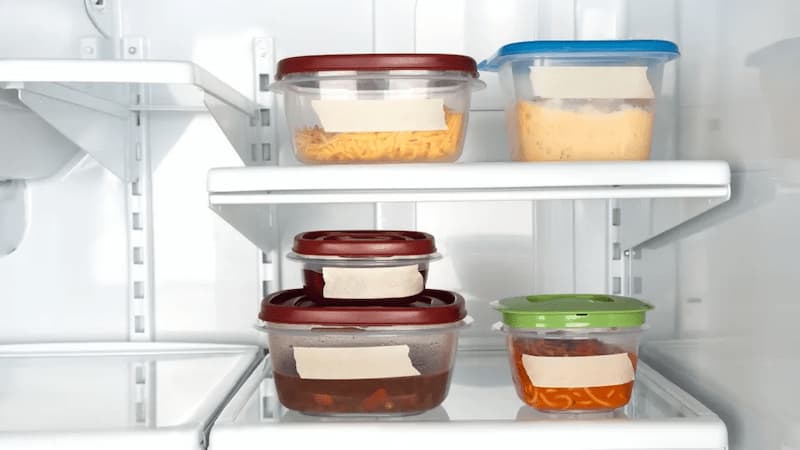
Can You Microwave Tupperware With a Lid On?
Yes, you can microwave Tupperware with a lid on, but it’s important to make sure that the lid is labeled “microwave-safe” by the manufacturer. Some lids can release chemicals into food when heated and should not be used in the microwave.
Make sure the lid fits tightly on the container as well. If the lid isn’t tight, steam could build up inside the container and explode as a result.
It is best to speak with the manufacturer for more information if you have any questions about microwaving Tupperware with a lid on.
How to Tell If Tupperware is Microwave Safe?
It is very simple to determine whether your particular Tupperware is microwave-safe because all kitchenware manufacturers are required by law to disclose the safety rating of their products.
When you purchase Tupperware, make sure you check the packaging for usage and safety instructions.
Most products will have a clear description on the package, and you can also verify this by going to Tupperware’s official website or by asking a nearby salesperson.
The other method involves looking for the appropriate symbols for safety indications.
At the bottom of every glass or plastic container, safety instructions are engraved. Because this information cannot be verbose, manufacturers use symbols to indicate the safety warnings for their products.
Tupperware Microwave Safe Symbol
Microwave oven safe symbols
These are a few of the symbols frequently used to designate products that can be used in a microwave.
Typically, multiple layered waves that resemble radio waves or sound waves are used to represent microwaves symbolically.
Please keep in mind that while the waves symbol is the most common usage for microwave-safe products, manufacturers may also use other symbols to denote the same.
For example, in some cases, you may clearly see “micro-safe” written at the bottom of the container. If the product is microwave safe, it may also display an atom symbol in other instances.
You may have noticed that the symbols up top don’t have a cross or a tick next to them.
A plain symbol without anything drawn over it usually refers to a “safe” product while a cross or “X” over a symbol shows that the product is not compatible with a particular heating method.
Keep in mind that you can always look to the instruction manual or the packaging for more usage details. A quick internet search should provide clarification if you are unable to read or understand the symbol at the bottom.
The best way to confirm a product’s safety is to contact the manufacturer or look up the symbol online because it is used universally but can be expressed in a variety of ways.
Tupperware Microwave Cooking Guidelines
-Check the label: Make sure your Tupperware is labeled “microwave-safe” before using it in the microwave. Use only if the microwave can handle it.
-Be sure to follow the manufacturer’s instructions when microwaving Tupperware because each type is unique. Before microwaving, some Tupperware varieties may need to be vented, while others shouldn’t be microwaved while still holding food.
-When using older Tupperware, use caution. If you’re not sure whether something is microwave-safe, it’s best to err on the side of caution and not microwave it. Polycarbonate, which can release BPA into food, may have been used to make older Tupperware products.
-Generally speaking, it’s best to steer clear of microwaving food in plastic containers. If you do microwave food in Tupperware, abide by the aforementioned instructions.
Not all Tupperware can be heated in a microwave, obviously. If you’re unsure, it’s best to look up more information online or on the label of the product. Generally speaking, it’s best to steer clear of microwaving food in plastic containers. If you do microwave food in Tupperware, though, be sure to adhere to the manufacturer’s guidelines and exercise caution when using older products.
Read about
Things to Know Before Microwaving Tupperware Containers
Tupperware containers are safe to use in the microwave, as long as they are labeled “microwave-safe” by the manufacturer. Certain lids can release chemicals into food when heated and are not safe to use in the microwave.
Moreover, it’s crucial to guarantee that the container’s lid fits securely. The container may explode if the lid is loose and allows steam to build up inside.
It is best to get more information from the manufacturer if you have any questions about microwave-safe Tupperware that has a lid on.
Making sure that the food is covered is crucial when microwaving food in Tupperware containers. The food won’t dry out as a result of this.
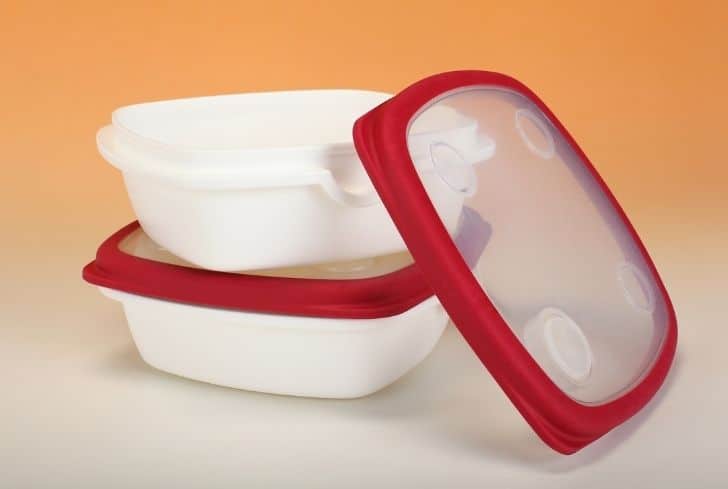
Tips for Microwaving Tupperware Lids
- Only microwave ‘microwavable’ products:
Even though it seems obvious, this needs to be said again. Only items that are specifically marked as microwave-safe. That means no plastic containers that don’t specifically state they can be microwaved, and no metal or foil containers (even if they have a “microwave-safe” label).
- Open the vent cap:
Make sure to open the vent cap on your Tupperware lid before microwaving if it has one. Otherwise, the pressure will build up and cause the lid to explode because the steam needs a way to escape.
- Reheat for a maximum of 3 minutes:
Spend no more than three minutes reheating food stored in Tupperware. Once this happens, the plastic begins to degrade and release toxic chemicals into the food.
- Let it cool before removing:
Once more, this is for your protection. Use oven gloves or a towel to protect your hands from getting burned after the Tupperware (and the food inside it) have been microwaved.
- Reheat on microwave medium heat level:
Use the medium heat setting when reheating food in Tupperware if your microwave has multiple heat settings. High heat may cause the plastic to warp and may even cause dangerous chemicals to escape.
- Maximum microwave temperature should be 120ᴼC & maximum microwave power 600W:
Make sure the maximum power and temperature are both 120 OC when microwaving food in Tupperware. Beyond these points, plastic begins to degrade and release hazardous chemicals, so these are the safe microwave limits for plastic.
You can safely microwave your Tupperware if you follow these recommendations. Always err on the side of caution and avoid using a container if you are unsure of its suitability for the microwave.
For How Long Should We Use Tupperware?
Product shelf life is limited for Tupperware.
While some products have a limited lifetime warranty, others only have a temporary warranty.
Read up on the specifics of your product and follow the instructions.
At What Temperature Will Tupperware Melt?
No matter how strong the plastic, when it is exposed to its melting temperature, it will start to melt.
The melting point of Tupperware, which is made of polyethylene (HDPE), is 137 degrees Celsius (278 degrees Fahrenheit).
The melted plastic starts to burn at temperatures that are too high. The lungs will become irritated by the toxins in burned plastic.
What Material of Tupperware Should Not Go in the Microwave?
You shouldn’t microwave any containers that don’t have a microwave-friendly sign on the bottom.
The brand provides a chart of numbers that helps identify the microwave-safe containers, as I mentioned earlier.
The seventh category’s containers are made of polycarbonate. Do not microwave them.
The container’s bottom should be turned. If your Tupperware is marked with the numbers 3, 6, or 7, they are outdated plastics and shouldn’t be used to store food.
It’s okay to use the numbers 2, 4, and 5 in the microwave or refrigerator.
You shouldn’t heat or store food in an old container.
Instead of using it for cooking or food, try using it for something else, like growing a sapling or storing needles and thread.
Difference Between a Microwave Safe and Non-Microwave Safe Plastic Container?
Plastic containers that are made from a particular type of plastic are more likely to withstand microwaves than those that are not. Polypropylene, a heat-resistant plastic that doesn’t release harmful chemicals into food when heated, is used to make plastics that are microwave-safe. Conversely, polycarbonate, which is used to make non-microwave safe plastics, can release BPA into food when heated.
It’s always best to check the label or manufacturer’s website for more information if you’re unsure of what kind of plastic a specific container is made of.
What is Tupperware?
In 1946, Earl Tupper created Tupperware, which was marketed as a lightweight, unbreakable plastic.
The Tupper corporation became famous with the concept of ” Tupperware parties” where the host provides the guests with the opportunity to order Tupperware products and receives a commission for each sale.
Tupperware is made of high-quality, durable, and secure materials, claims the manufacturer.
Polypropylene and low-density polyethylene are primarily used in the production of Tupperware. It is safe to reuse this kind of plastic.
BPA is typically used in the manufacture of plastic containers. BPA is a dangerous chemical that harms reproductive tissues and is linked to diabetes, obesity, and hormone disruption.
BPA can contaminate food by leaking into containers, according to research. When they are exposed to hot temperatures, they may also leak out of plastic containers.
Products from Tupperware don’t contain bisphenol-A. Without having to worry about leaching, you can use it safely for your daily needs.
For the production of its products, the company has strict guidelines. Containers are only made of plastic that is safe for use with food.
Where is Tupperware Manufactured?
The United States is where Tupperware is made.
It also operates manufacturing facilities in South Africa, Japan, Korea, India, China, France, Portugal, Mexico, Brazil, and Venezuela.
In the US, Tupperware is widely available and used.
The company sells a variety of cooking and storage containers in addition to microwave-safe containers for various daily requirements.
After 2010, no Tupperware product is made with BPA.
Food serving utensils and the Ultra 21 cookware line are a few examples of American-made goods.
The microwave-safe containers can safely be transferred from the refrigerator to the oven or microwave. The containers from the 21 Series are lightweight and flameproof.
Alternatives for Microwave Cooking
Use a glass container instead of plastic that can be heated in a microwave if you prefer.
Glass containers never cause food to react. For microwaves, they are the most secure option. Nevertheless, to prevent breaking, make sure the glass is microwave-safe.
Be cautious when placing and removing glass from the microwave because it can be a little heavy.
Ceramic containers that are microwave-safe are another excellent option. Ceramic lasts a very long time and is non-reactive.
Comparatively safe and dependable to plastic containers in the microwave are glass and ceramic ones.
Glass Vs. Plastic – What is Better?
Tupperware is offered in glass and plastic varieties, both of which are incredibly hardy, as was previously mentioned. The glass Tupperware is vulnerable to thermal shock, so there is a small catch to this.
In plain terms, thermal shock is when extreme temperature changes cause stress on the surface of the glass which can make it shatter.
This is a very frequent occurrence and is typically more noticeable with glass containers that are frozen as opposed to those that are at room temperature.
Keep in mind that Tupperware containers are also freezer-safe which means that you can easily keep them directly in the freezer without having them crack or break.
This is why a lot of people find it more convenient to microwave food after removing it from the freezer.
In most cases, this might not be a big deal, but glass Tupperware could break in the right circumstances!
Tupperware addresses this issue by using high-quality and tested materials like tempered or borosilicate glass that is rated for both higher and lower temperature ranges.
These products may be safer to use for all types of heating needs because they can easily withstand drastic temperature changes.
However, unless the food will be consumed right away, you shouldn’t try to microwave food stored in frozen Tupperware.
The best way to ensure the safety of yourself and your appliance is to first thaw the food in the fridge overnight before heating it in the microwave.
The microwave will operate much more efficiently with this technique because the food will be heated evenly throughout with no cold spots and the container will be exposed to microwave radiation for a shorter period of time.
Additionally, because glass is naturally non-porous, it won’t absorb liquids or develop stains over time.
Comparatively, plastic Tupperware is just as strong, light, and useful, but despite being deemed safe for use in microwaves, many people are still reluctant to use plastic containers in them.
High-quality plastic storage containers made by Tupperware can withstand both sub-zero and scalding heat.
However, like with the glass containers, it would be best if you could follow the same heating and thawing indications for plastic containers as well.
FAQs
Can You Microwave Food in a Clear Plastic Container?
Food in a clear plastic container can be microwaved as long as it is safe for use in the appliance. To prevent food from drying out, it’s crucial to make sure the container is covered.
Is It Safe to Reheat Food in Tupperware?
As long as you adhere to a few straightforward rules, it is safe to reheat food in Tupperware. Verify the Tupperware is safe for the microwave first. Second, reheat for no more than three minutes. Third, wait until the food has cooled before taking it out of the microwave. To avoid harming the plastic, reheat on a medium setting.
Can Tupperware Be Defrosted in the Microwave?
Yes, Tupperware can be microwaved defrosted. However, it’s crucial to confirm that the Tupperware is microwave-safe. Second, defrost for no more than three minutes. Third, wait until the food has cooled before taking it out of the microwave. To avoid harming the plastic, reheat on a medium setting.
Is Metal Tupperware Safe to Microwave?
No, metal Tupperware is not safe to microwave. A fire might start as a result of the metal sparking. The microwave could also sustain damage from the metal.
Can You Use Knives Or Sharp Objects With Tupperware?
No, you shouldn’t use knives or other pointed objects with Tupperware. The plastic may be harmed by the sharp edges, which also might cause dangerous chemicals to leak.
Microwave Tupperware With the Lid on Or Off?
Always microwave Tupperware with the lid off for safety reasons. This will enable the steam to escape and stop the food from drying out. Additionally, it will lessen the likelihood of Tupperware warping.
Final Thoughts
People are hesitant to combine glass and plastic Tupperware with microwaves because they are commonly used to store food worldwide.
An iconic company with a long history is Tupperware. These adaptable, convenient, and attractive containers work well in both the refrigerator and the freezer.
Heat and plastics together can be dangerous. According to current research, a plastic container can be heated in a microwave without affecting the food inside if it bears that designation.
Transfer your food to a glass or ceramic dish if you’d prefer not to worry about it.

